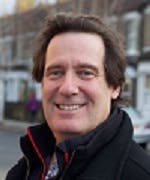Signify to suppliers: Get green
One of the more challenging aspects in the drive to net zero for any company is to bring suppliers on board. Establishing “green” as a condition of purchase agreements can make for awkward conversations. Now, Signify thinks it has cracked it.
The Dutch lighting giant has announced a plan to cut greenhouse gas (GHG) emissions by 90% “across its entire value chain” by 2040, at which point it will reach net zero, the company said in a press release. The “entire value chain,” of course, includes suppliers — companies from which Signify buys anything, be it electrical components, glass, plastic, wires, cardboard...you name it.
“A crucial point of progress is that these efforts encompass not just our own operations, but our entire value chain, and beyond,” said Eric Rondolat, CEO of the Eindhoven-based company, in announcing the 2040 plan.
Signify did not elaborate on exactly how it will impose eco requirements on its suppliers, other than noting that the plan includes “incentivizing suppliers to commit to renewable energy, electrification of the logistics fleet and further extending the use of energy-efficient LED lighting – the single biggest factor in reducing the lighting industry’s emissions in recent years.”
As LEDs Magazine has reported, lighting industry vendors such as U.K. reuse specialist Recolight and London-based designer/specifier Nulty have been among the early movers in pressing their suppliers into taking environmental sustainability measures.
In some cases, green requirements could lead to a parting with established suppliers. Communication can also be fraught with questions of how exactly to measure and prove eco practices.
But a trend is emerging in which buyers such as lighting companies are increasingly applying pressure on suppliers to green up.
For a quick review: Net zero is when the value of GHG that an entity emits, minus the amount it removes from the atmosphere, is zero. It is more ambitious than carbon neutrality, which permits offsetting measures such as purchasing carbon credits.
One of the leading entities that measures and advises on GHG reduction and net zero is the Greenhouse Gas Protocol, a joint effort of the Washington, D.C.–based World Resources Institute and the Geneva, Switzerland–based World Business Council for Sustainable Development. In its widely used assessment methods for GHG reduction, Scope 1 pertains to direct energy use, such as fuel for fleet vehicles; Scope 2 to energy purchased, such as electricity or gas for office and factory operations; and Scope 3 to GHG emissions across a company’s value chain, including suppliers and customers.
Signify noted that most of its Scope 3 emissions are on the customer side, and that by virtue of its customers purchasing LED lighting, “the company’s 2040 net-zero ambitions focus on continuing to lead the industry in developing increasingly efficient lighting technologies.”
Earlier this year, Signify added Scope 3 to its internal assessment of its progress, but included only the customer portion of Scope 3. With the new announcement of supplier measures, it will now include supplier progress in future internal accounting.
Signify said its plan calls for a “50% reduction in absolute scope 1, 2 and 3 greenhouse gas emissions by 2030, compared with 2019 base year” and a “90% reduction in absolute scope 1, 2 and 3 greenhouse gas emissions by 2040, compared with 2019 base year.”
The company said that its measures have been validated by Science Based Targets Initiative (SBTi), a London-based group that works with companies to measure the climate situation, devise improvement programs, and assess the results.
SBTi recently also validated net zero plans for Norwegian LED lighting vendor Glamox, across Scopes 1, 2 and 3.
Follow our LinkedIn page for our latest news updates, contributed articles, and commentary, and our Facebook page for events announcements and more. You can also find us on the X platform.



